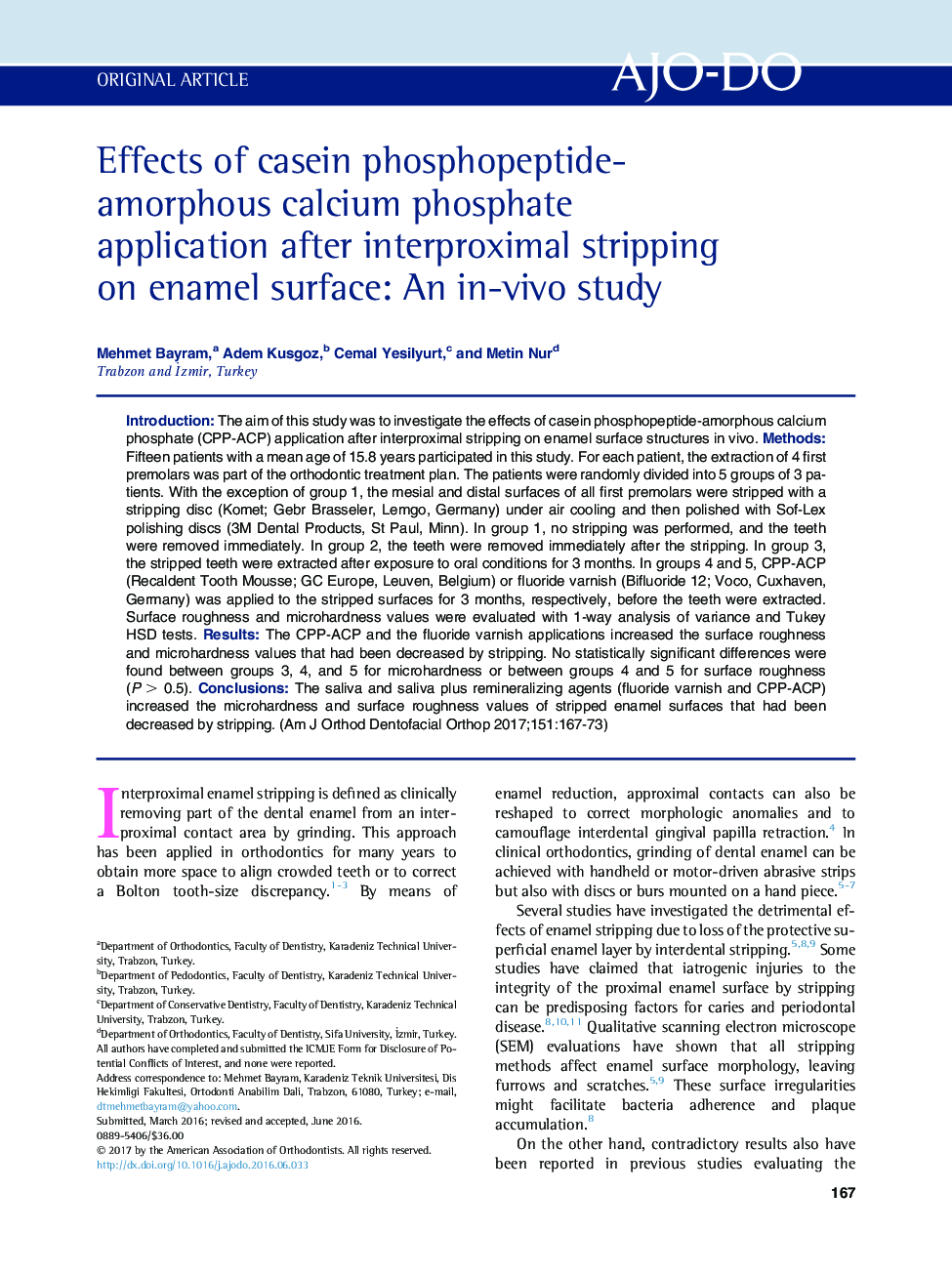| Article ID | Journal | Published Year | Pages | File Type |
|---|---|---|---|---|
| 5637529 | American Journal of Orthodontics and Dentofacial Orthopedics | 2017 | 7 Pages |
â¢Stripped enamel surfaces after remineralizing agent application were examined in vivo.â¢Interproximal enamel stripping decreased the microhardness of enamel surfaces.â¢Saliva, fluoride varnish, and CPP-ACP increased the microhardness of stripped enamel.â¢Smoother enamel surfaces were produced than intact enamel with subsequent polishing.â¢Exposure to saliva + remineralizing agents increased surface roughness.
IntroductionThe aim of this study was to investigate the effects of casein phosphopeptide-amorphous calcium phosphate (CPP-ACP) application after interproximal stripping on enamel surface structures in vivo.MethodsFifteen patients with a mean age of 15.8 years participated in this study. For each patient, the extraction of 4 first premolars was part of the orthodontic treatment plan. The patients were randomly divided into 5 groups of 3 patients. With the exception of group 1, the mesial and distal surfaces of all first premolars were stripped with a stripping disc (Komet; Gebr Brasseler, Lemgo, Germany) under air cooling and then polished with Sof-Lex polishing discs (3M Dental Products, St Paul, Minn). In group 1, no stripping was performed, and the teeth were removed immediately. In group 2, the teeth were removed immediately after the stripping. In group 3, the stripped teeth were extracted after exposure to oral conditions for 3 months. In groups 4 and 5, CPP-ACP (Recaldent Tooth Mousse; GC Europe, Leuven, Belgium) or fluoride varnish (Bifluoride 12; Voco, Cuxhaven, Germany) was applied to the stripped surfaces for 3 months, respectively, before the teeth were extracted. Surface roughness and microhardness values were evaluated with 1-way analysis of variance and Tukey HSD tests.ResultsThe CPP-ACP and the fluoride varnish applications increased the surface roughness and microhardness values that had been decreased by stripping. No statistically significant differences were found between groups 3, 4, and 5 for microhardness or between groups 4 and 5 for surface roughness (P > 0.5).ConclusionsThe saliva and saliva plus remineralizing agents (fluoride varnish and CPP-ACP) increased the microhardness and surface roughness values of stripped enamel surfaces that had been decreased by stripping.
